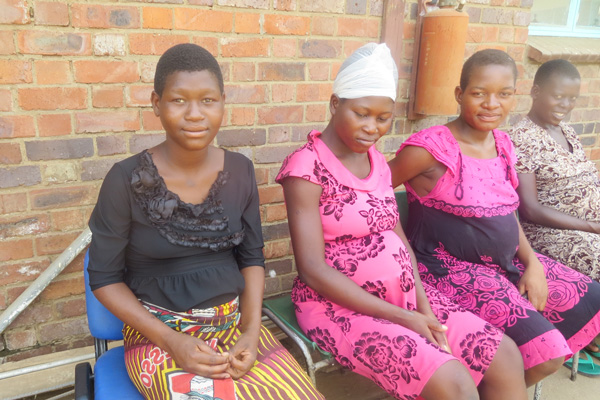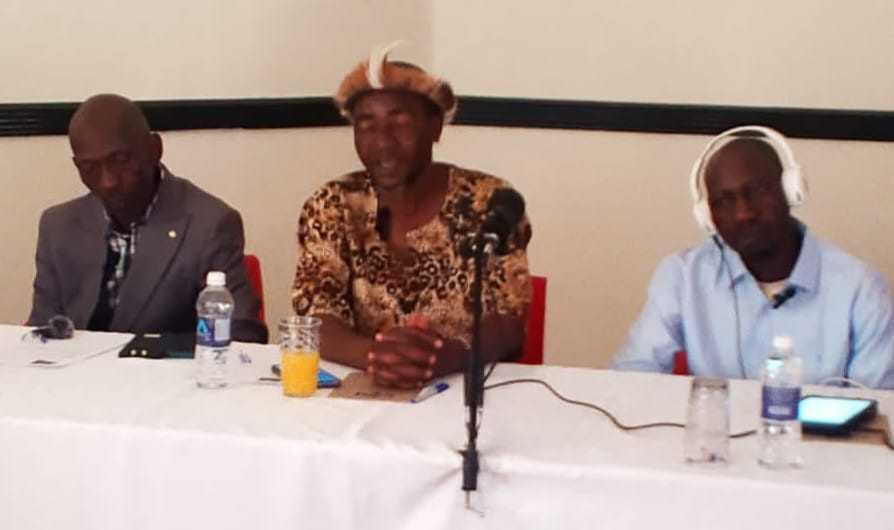
Sylvia Mhaka is a 32-year-old woman who lives in Sadzandibaye village along the Zimbabwe/Mozambique border in Rushinga.
By Moses Mugugunyeki recently in Rushinga She has given birth to three children in the past 11 years and is expecting the fourth in a few weeks.

Because of previous painful experiences, she is scared of the day she goes into labour. She has had several miscarriages already.
“My husband insists I should bear him seven children. I pray every day for successful delivery and I am hopeful this will be a successful one. However, I feel weak and without energy to carry more pregnancies after this one,” said Mhaka.
Mhaka looks frail and vulnerable, yet she says her husband has threatened to marry another woman if she does not give him the seven children that he wants.
“I have allowed my husband to marry someone who can bear him more children but sometimes he insists he wants me to give him those children because he paid lobola for me to do just that,” she said.
However, the couple is having difficulties looking after the three children that they have and Mhaka wonders how the situation would be like with seven offspring.
- Chamisa under fire over US$120K donation
- Mavhunga puts DeMbare into Chibuku quarterfinals
- Pension funds bet on Cabora Bassa oilfields
- Councils defy govt fire tender directive
Keep Reading
Mhaka was among 16 expecting mothers who were housed at a maternity waiting shelter at Nhawa Clinic in Rushinga. She had travelled 30km from her home to the clinic.
The clinic’s catchment area includes villages along the border. It also caters for patients from Mozambique.
Mhaka is among many other women in Rushinga who must travel long distances to health centres and who share the same predicament with her — that of husbands that demand to have many children.
“My husband does not want us to use contraceptives at all and after I get pregnant, he doesn’t want to accompany me to the clinic,” said Mhaka.
A nurse at the clinic said most men in the area were against the use of contraceptives.
“Most men in this area are ignorant of women’s reproductive health needs and family planning options,” she said.
“It’s unfortunate that most women cannot make family planning decisions or access services and products without their husbands’ permission, agreement or financial support.”
The nurse said Mhaka’s case was not unique in the area as most men were of the idea that having many children was a sign of virility.
“You will realise that most families in this area are very large. The men view wives as child-bearing machines, not as human beings,” she said.
Investigations carried out by The Standard in the area showed that having lots of children was among the several causes of maternal mortality which include malaria, postpartum hemorrhage and sepsis.
However, sister-in-charge of community nursing in Rushinga, Annie Chinove said maternal mortality had gone down in the district following the construction of maternity waiting rooms at most clinics, including Nhawa.
“The maternal mortality rate was very high in the district. However, of late, we are recording fewer maternal deaths. I attribute this to the construction of maternity waiting rooms at most of our clinics,” she said.
“Our catchment area includes border areas and in most cases expecting mothers must travel 30km to reach the nearest clinic. Some go into labour on their way to the clinic while others reach the clinics too exhausted to manage safe delivery.”
Chinove said teenage pregnancies were prevalent in Rushinga, a phenomenon which she said contributed immensely to the district’s high maternal mortality rate.
“We have lots of teenage pregnancies here. It is one area that needs to be addressed if we are to reduce maternal deaths in the district,” she said.
She said the Health ministry, in partnership with various stakeholders, was holding awareness campaigns to curb teenage pregnancies.
“Poverty is the major driver of early child marriages. We have embraced men in most of our campaigns to curb early marriages. We are also taking advantage of the waiting rooms where we teach expecting mothers on the importance of HIV-testing and counselling,” Chinove said.
Fifteen-year-old Belinda Kabalaza, an expecting mother from Pfinyanguwo village who was at Chimhanda District Hospital maternity waiting rooms, said the waiting rooms were the safest place for her condition.
“I am here because I fear I might die or lose my child if I deliver at home. I was registered at a our local clinic where I was equipped with knowledge on HIV,” said Kabalaza who dropped out of school when she was in Grade Seven.
Zimbabwe’s maternal mortality rate of 614 deaths per 100 000 live births is still one of the highest in the world. Despite government having made efforts to reduce maternal deaths, cases like Mhaka and Kabalaza have eroded the gains of the country’s maternal health care.
Research has shown that mothers who bear between two and four children are at the lowest risk of mortality from all causes while those who have five or more children live shorter lives.
In fact, mothers with between five and nine children have about two and a half times higher risk of dying of heart disease or circulatory disease than mothers with fewer than five children.











